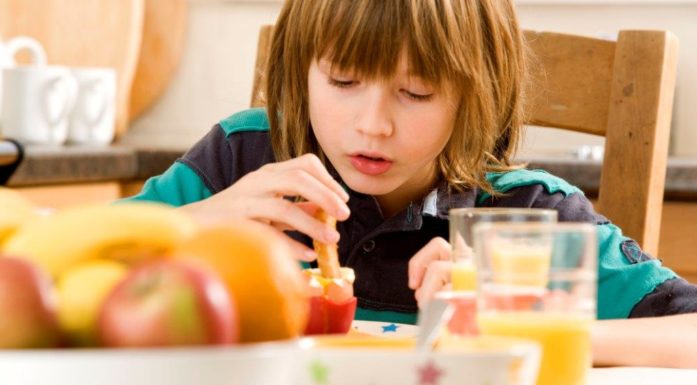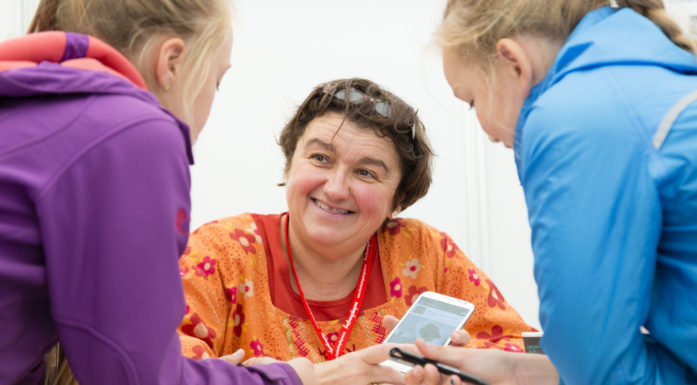App improves quality of life for hard-hit patient group
A recently developed app with an in-built “enzyme calculator” reduces stomach pains and intestinal problems among patients with cystic fibrosis – a disease of the lungs and intestinal tract.
Guest writers
Jacqueline Floch, Senior Research Scientist at SINTEF
Carmen Ribes-Koninckx, Head of Pediatric Gastroenterology and Hepatology at La Fe Hospital, Valencia, Spain
Digestive enzymes in tablet form
As part of an EU project, we and other specialists have been working together to develop an app to that aim – for patients with cystic fibrosis. The results are very promising and it is likely that experience from our work will also be able to benefit other patient groups.
Cystic fibrosis is a rare and hereditary multi-organ illness triggered by a genetic defect that causes disruption of salt and fluid transportation between the body’s cells. It affects the lungs, but it is less well-known that the pancreas is also affected – and thus the digestive tract.
For this reason, most patients with this disease have to take digestive enzymes in tablet form to enable them to take up sufficient nutrients and avoid stomach upsets and malnutrition. But how can we tell what individual patients need?
Algorithm calculates the recommended dosage
To date, recommended enzyme doses have been based on rules of thumb that have varied from country to country. Our app addresses this using an algorithm that calculates the recommended dosage for each individual patient, based entirely on information about the content of his or her meals.
Now, more than 150 children and young people with cystic fibrosis have tested the app for a six-month period, together with their next of kin. This is no small number, given that the disease is so uncommon. In spite of the short trial period, outcomes are promising and much better than we expected.
We consistently found that stomach pains and digestive problems became significantly reduced as soon as the patients began using the app.
As well as calculating enzyme dosages, the app provides patients and their next of kin with nutritional advice tailored to the disease, and this appears to have helped trial patients change their dietary habits for the better.
New life for Joaquim (5)
Five-year old Joaquim is one of those who has benefited from the app. In interviews with us, his mother told us that the boy was diagnosed when he was two years old. During the next three years his parents were unable to stabilise his gastric and intestinal health.
So they started to use the app. “Since then his body weight increased faster than before, and last summer he overtook his sister in both weight and height”, says Joaquim’s mother. “And he hasn’t had any stomach pains for a long time”, she says.
Effective teaching
Both the algorithm and other features of the app are the result of the European project MyCyFAPP (2015-2018), which was also responsible for running the subsequent clinical trial. The project involved a collaboration between physicians, nutritionists, nurses and data researchers from seven countries.
Together we observed the significance of self-management. A poorly researched area in the field of eHealth, which is a collective term for all uses of ICT technologies for the purposes of improving efficiency, quality and safety in the healthcare sector.
Today, much revolves around Big Data and artificial intelligence. This is all well and good. But what our project has shown is that a digital support device (in our case an app) can also function as a coaching engine for patients who need to learn to help themselves.
The “engine” doesn’t have to be running all the time, and in fact should not do so. If patients have to enter data about their meals and symptoms every day, they may get so bored with the system that they become careless about the data they enter. So it is even more satisfying that in fact patients appear to learn from the app very quickly and remember its recommendations, both in connection with enzyme dosages and nutritional intake.
Different skill sets
During the project, we have learned a great deal about what it takes to get an app of this type to work in this way. It’s not simply a case of giving the app to a patient and saying: “Here you are, get on and use it – it’s good for you”.
Patients and next of kin have different skill sets. For this reason we realised that it was important to monitor use of the app in the early stages. At the same time we learned a lot about how health personnel can act as instructors during this process.
Will be commercialised
Work is now under way to commercialise the app. Hopefully our research findings and the experience we gained will enable us to develop similar digital support services for other patient groups.
This article originally appeared on Friday June 7, 2019 in the Norwegian business daily “Dagens Næringsliv”, and appears here by kind permission of DN.




